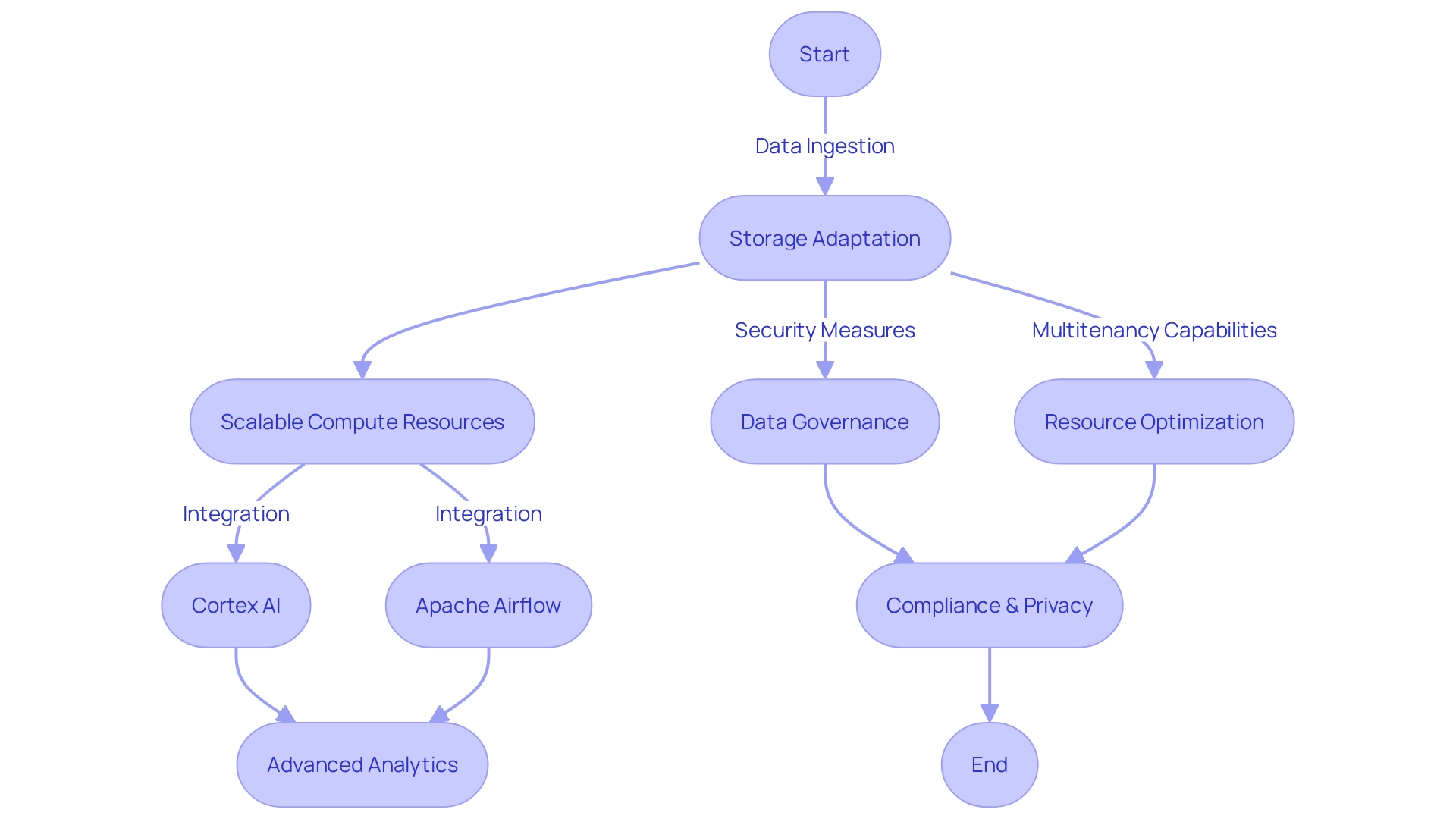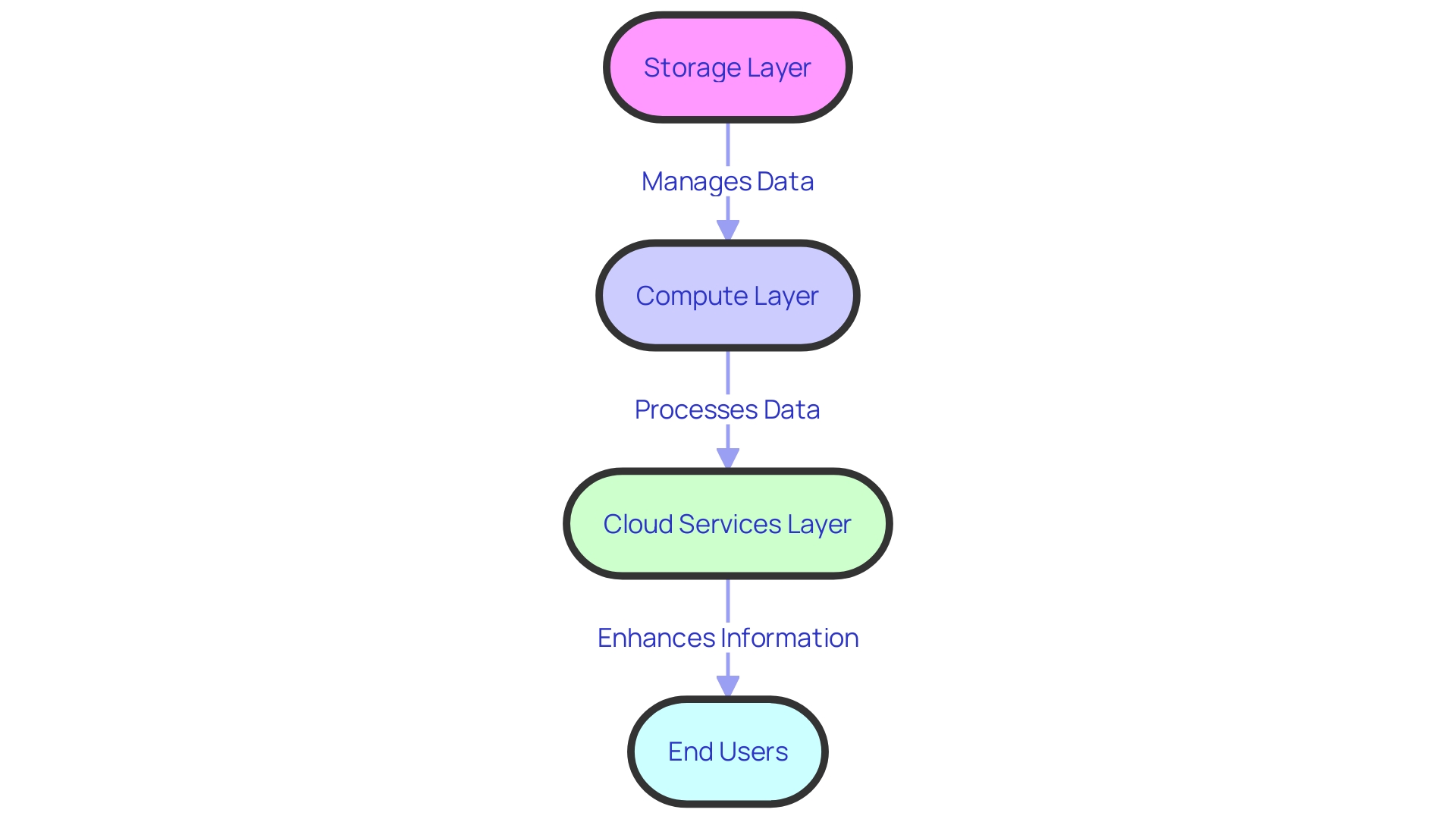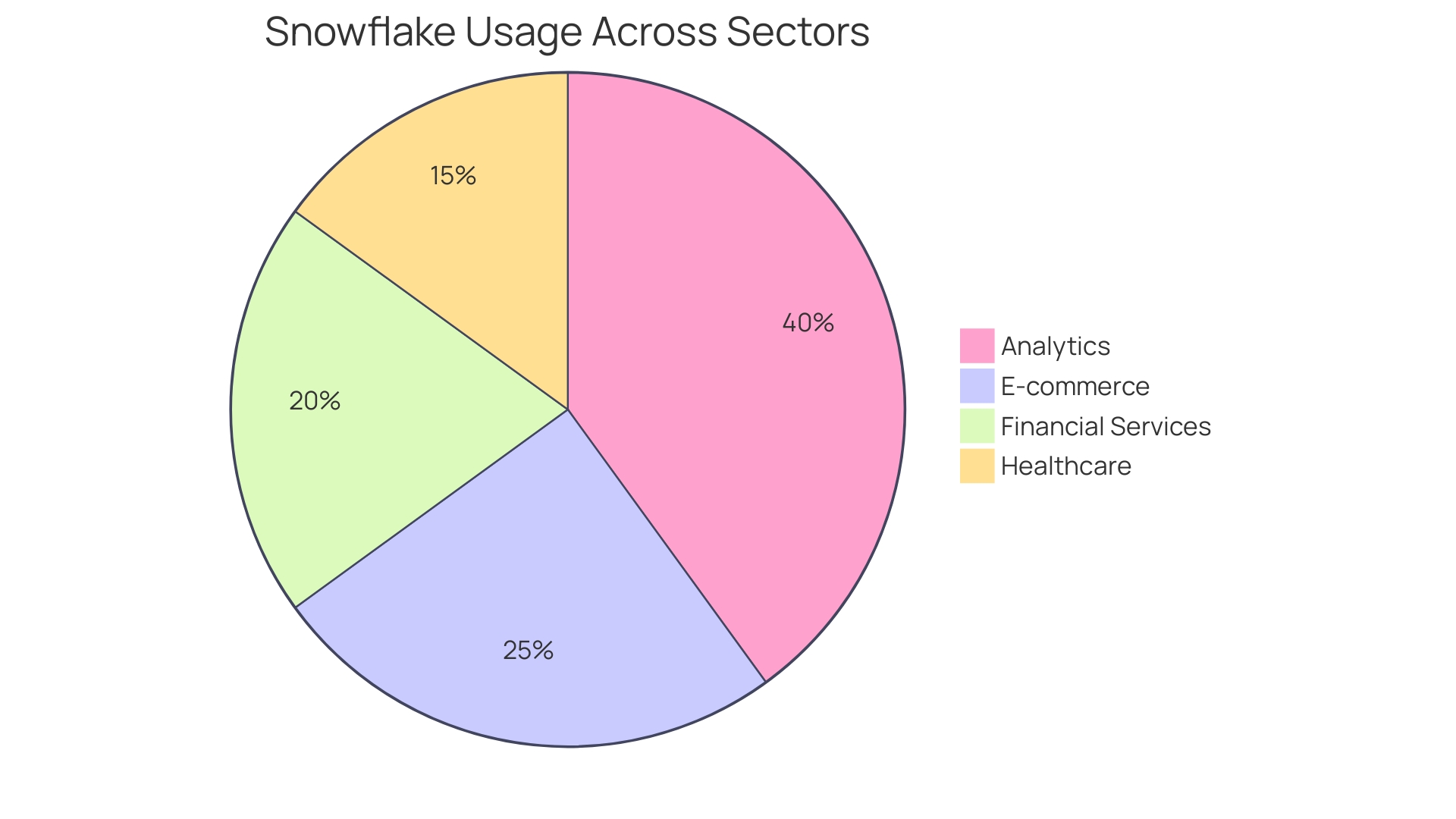Introduction
Snowflake Cloud Services is transforming the data warehousing landscape with its advanced features designed to meet the demands of modern businesses. With elastic storage and scalable compute resources, Snowflake ensures efficient data management without straining your budget. The integration of Cortex AI enables machine learning capabilities, automating complex data processes and extracting deeper insights.
Snowflake also simplifies data pipeline setup and management, while its robust access control and multitenancy capabilities ensure data security and isolation. By adopting Snowflake, businesses can leverage a data platform that enhances the development of modern data applications while upholding privacy and governance protocols. In this article, we will delve into the key features of Snowflake Cloud Services, its architecture overview, pricing model, and real-world applications, showcasing its role as a critical asset for enterprise innovation and growth.
Key Features of Snowflake Cloud Services
Cloud Services is transforming the warehousing landscape with its advanced features that cater to contemporary enterprise requirements. At its essence, the structure of Snowflake provides adaptable storage that seamlessly adjusts to the volume of information in your organization, ensuring that your data management is both efficient and cost-effective. Its scalable compute resources dynamically align with your workload requirements, guaranteeing top-notch performance without overburdening your budget.
The integration of Cortex AI within the Snowflake platform empowers businesses with machine learning capabilities, fostering the automation of complex data processes and extracting deeper insights. This is particularly advantageous for companies seeking to implement hybrid search strategies, combining semantic understanding with traditional keyword search to enhance discoverability and utility.
The platform also streamlines the configuration and administration of reliable information pipelines, as demonstrated by the smooth integration with Apache Airflow, allowing companies to optimize the transfer of data across different systems. The platform's cloud services layer enhances your warehousing experience with essential tools for integration, governance, and sharing.
With security being of utmost importance, the approach taken by the company to control access meticulously combines discretionary and role-based models, strengthening information against unauthorized entry while upholding compliance with strict industry standards. This, combined with the multitenancy capabilities of the platform, guarantees that your information stays separate and safeguarded within a shared infrastructure environment.
Embracing Snowflake entails adopting a platform that's not only designed for the cloud but also enhances the development of modern applications. It's a strategic move for businesses that are determined to utilize the full potential of their information while upholding strict privacy and governance protocols.

Architecture Overview
The Snowflake Cloud Platform's architecture is ingeniously structured to fulfill modern warehousing needs, comprising three distinct layers that work in concert to manage, process, and enhance information. At its core, the Storage layer utilizes columnar storage, optimizing compression and expedited retrieval. Its impressive scalability effortlessly accommodates extensive volumes. The Compute layer, the engine of the platform, dynamically scales computing resources to match query processing and analytical demands, ensuring both performance and cost-effectiveness. The apex layer, Cloud Services, enhances the platform with advanced functions such as seamless information integration, governance, and sharing capabilities, which resonate with the daily necessity for interactive, data-driven applications across various professional fields.
Notably, Snowflake's Data Cloud serves as the singular source of truth, pivotal for storing, scrutinizing, and disseminating voluminous information. It is the foundation for creating pipelines, which automate movement and transformation, significantly reducing the time to insight. This ecosystem supports the emergence of innovative applications, transitioning from conventional batch processing to real-time analysis, meeting the high-availability demands of a 24/7 SaaS service. Embracing a lake within its framework offers benefits like cost-effective storage and adherence to open standards, ensuring that information remains accessible and non-redundant, even when it doesn't necessitate real-time processing.
Supporting the platform's robustness is the access control of the company, combining Discretionary Access Control (DAC) and Role-based Access Control (RBAC), to provide precise data access. This layered approach to architecture not only reflects the company's forward-thinking strategy but also its responsiveness to evolving technology trends, like the application of artificial intelligence and the growth of native applications on the Marketplace.

Pricing Model and Cost Optimization
Snowflake's cloud services adopt a versatile pricing strategy, catering to the dynamic needs of enterprises. With its usage-based pricing model, customers can scale compute and storage resources according to demand, directly aligning costs with consumption. This pay-as-you-go approach is critical for businesses that experience variable workloads, allowing them to manage costs effectively without sacrificing performance. The pricing intricacies of this company involve two types of prices for their Stock Keeping Units (SKUs): list price, which is the base price inclusive of any standard discounts, and contracted/custom price, which is tailored to an organization and encompasses negotiated discounts and credits. Furthermore, the platform enhances cost-efficiency through intelligent features like automatic query optimization and optimization of information retention, which are pivotal in streamlining operations and curbing unnecessary expenses. In practice, computational expenses accrue the moment a warehouse is activated and continue until it is suspended, which can lead to idle costs between 10%-25% of the total compute spend. By taking advantage of the optimizations and understanding the nuances of pricing models, organizations can navigate the economic landscape, even amidst market volatility, inflation, and fluctuating interest rates. The company keeps pushing the boundaries with advancements such as Iceberg Tables and tiered storage pricing, aimed at maximizing efficiency and providing customers with a more economical storage option.
Real-World Applications and Success Stories
Utilizing the cutting-edge cloud solutions provided by a leading cloud platform, industries across various sectors are experiencing revolutionary results. Major sectors such as analytics, e-commerce, healthcare, and financial services have utilized the capabilities of Snowflake to revolutionize their operations. In the realm of analytics, Snowflake stands out for its real-time analysis, empowering companies to extract actionable insights and foster data-driven strategies that propel growth. E-commerce entities benefit from efficient management of information, utilizing it for targeted marketing initiatives, optimized inventory systems, and enhanced customer experiences. The healthcare industry, dealing with sensitive information, relies on a secure and scalable platform to advance patient care and streamline processes while bolstering medical research. In the financial services industry, where security is crucial, trust in a reliable platform to protect data, enable fraud detection, and ensure compliance with regulations. These instances underscore Snowflake's pivotal role in the modern data-driven landscape, cementing its position as a critical asset for enterprise innovation and growth.

Conclusion
In conclusion, Snowflake Cloud Services offers advanced features for efficient data management without straining budgets. The integration of Cortex AI enables machine learning capabilities, automating complex data processes and extracting deeper insights. Snowflake simplifies data pipeline setup and management, while robust access control and multitenancy capabilities ensure data security and isolation.
Snowflake's architecture comprises three layers that work together to manage, process, and enhance data. The Storage layer optimizes data compression and retrieval, the Compute layer dynamically scales computing resources, and the Cloud Services layer provides advanced functions for data integration, governance, and sharing.
With a flexible pricing strategy, Snowflake allows businesses to scale resources according to demand, aligning costs with consumption. Intelligent features like automatic query and data storage optimization enhance cost-efficiency.
Industries across the board, including data analytics, e-commerce, healthcare, and financial services, have witnessed transformative outcomes with Snowflake. Real-time analytics empower companies to extract actionable insights, while secure and scalable solutions support sensitive data handling and compliance.
In summary, Snowflake Cloud Services is a critical asset for enterprise innovation and growth. Its advanced features, architecture, flexible pricing, and real-world applications make it a reliable and efficient data platform. By adopting Snowflake, organizations can enhance data management, drive insights, and uphold privacy and governance protocols.




